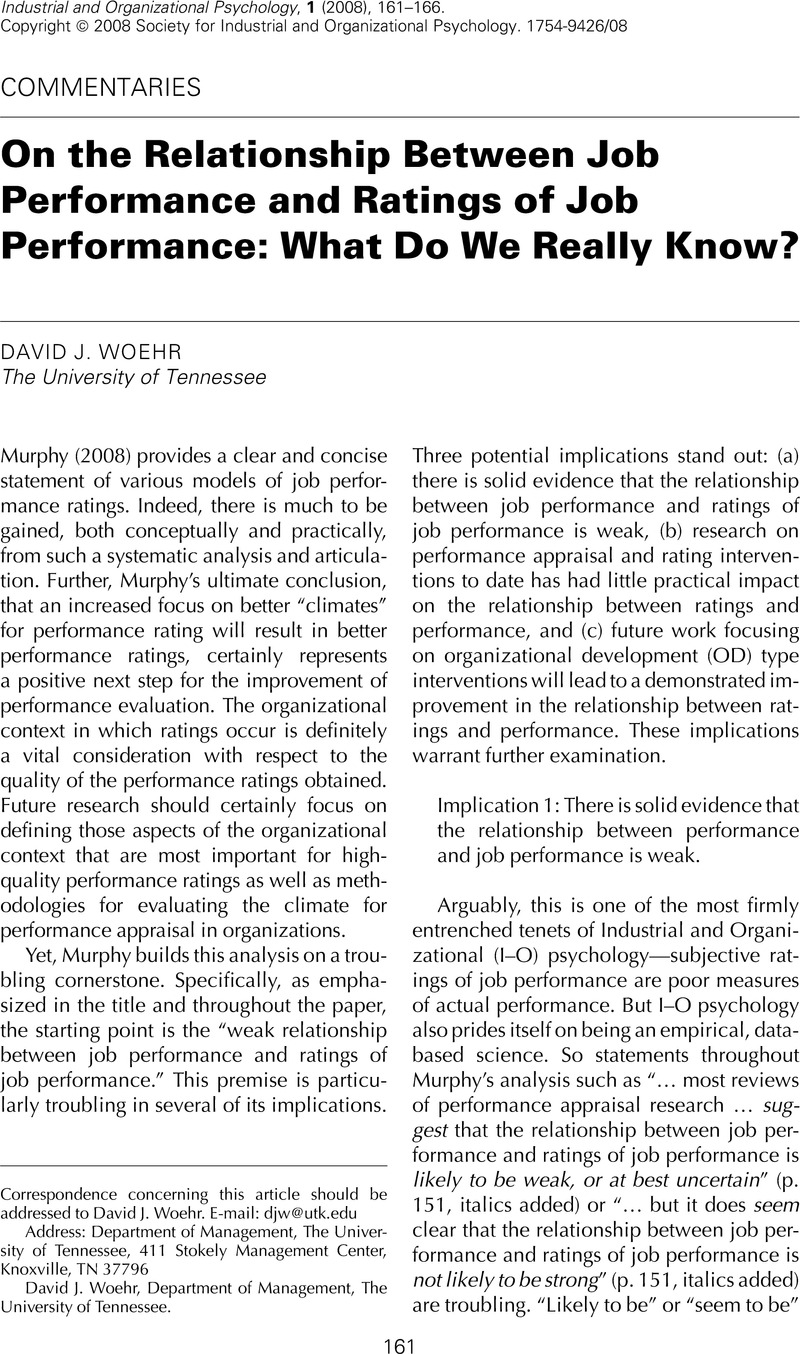Crossref Citations
This article has been cited by the following publications. This list is generated based on data provided by Crossref.
Murphy, Kevin R.
2008.
Perspectives on the Relationship Between Job Performance and Ratings of Job Performance.
Industrial and Organizational Psychology,
Vol. 1,
Issue. 2,
p.
197.
Hoffman, Brian J.
Gorman, C. Allen
Blair, Carrie A.
Meriac, John P.
Overstreet, Benjamin
and
Atchley, E. Kate
2012.
Evidence for the Effectiveness of an Alternative Multisource Performance Rating Methodology.
Personnel Psychology,
Vol. 65,
Issue. 3,
p.
531.
Spence, Jeffrey R.
and
Baratta, Patricia L.
2014.
The Wiley Blackwell Handbook of the Psychology of Training, Development, and Performance Improvement.
p.
437.
O’Neill, Thomas A.
McLarnon, Matthew J. W.
and
Carswell, Julie J.
2015.
Variance Components of Job Performance Ratings.
Human Performance,
Vol. 28,
Issue. 1,
p.
66.
Roch, Sylvia G.
2017.
Analytics and Information: A Case for Performance Ratings.
Industrial and Organizational Psychology,
Vol. 10,
Issue. 1,
p.
39.
Ramos-Villagrasa, Pedro J.
Barrada, Juan R.
Fernández-del-Río, Elena
and
Koopmans, Linda
2019.
Assessing Job Performance Using Brief Self-report Scales: The Case of the Individual Work Performance Questionnaire.
Revista de Psicología del Trabajo y de las Organizaciones,
Vol. 35,
Issue. 3,
p.
195.
Karabetyan, Lina
2022.
Technological Development and Impact on Economic and Environmental Sustainability.
p.
112.
Hamad Ameen, Saman Sidqi
and
BEKTAŞ, Çetin
2023.
The Role of Knowledge Management on Employees' Work Performance.
Tikrit Journal of Administrative and Economic Sciences,
Vol. 19,
Issue. 62, 2,
p.
345.





